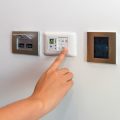Understanding Soundproofing Needs in Multi-Family Living
Living in an apartment or condo comes with many advantages—convenient locations, shared amenities, and a sense of community. However, one common challenge that residents often face is noise. Whether its footsteps from the unit above, voices through the walls, or sounds from appliances, unwanted noise can affect your comfort, privacy, and even your relationship with neighbors.
Why Is Soundproof Flooring Important?
In multi-family buildings like apartments and condominiums, sound travels more easily through floors and ceilings than you might expect. Installing soundproof flooring helps reduce both impact noise (like footsteps or dropped items) and airborne noise (like music or conversations). This not only improves your own living experience but also shows consideration for those living around you.
Common Noise Problems in Apartments and Condos
| Noise Source | Type of Noise | Typical Location |
|---|---|---|
| Footsteps | Impact Noise | Above Unit |
| TV/Music | Airborne Noise | Adjacent Walls |
| Appliances (e.g., washer/dryer) | Vibration/Impact Noise | Shared Walls or Floors |
| Loud Conversations | Airborne Noise | Next-Door Units or Hallways |
The Benefits of Installing Soundproof Flooring
- Enhanced Comfort: Enjoy a quieter, more peaceful home environment.
- Improved Privacy: Keep personal conversations and everyday activities private.
- Better Neighbor Relations: Reduce the risk of noise complaints and conflicts.
- Higher Property Value: Soundproof upgrades can make your unit more appealing to future buyers or renters.
A Smart Investment for Apartment Living
If youre planning a remodel or just want to improve your living experience, installing soundproof flooring is a smart step. Understanding the sources of noise and how they affect daily life is the first move toward creating a quieter, more comfortable space in your multi-family home.
2. Types of Soundproof Flooring Materials
When it comes to soundproofing apartments and condos, choosing the right flooring material is key. Multi-story buildings require materials that can reduce both impact noise (like footsteps) and airborne noise (like voices or TV sounds). Here are some of the most popular soundproof flooring options that work well in shared living spaces:
Cork Flooring
Cork is a natural material known for its excellent sound absorption. It’s soft underfoot, eco-friendly, and works great in reducing impact noise. Cork can be installed as tiles or planks and often comes with a built-in underlayment for added insulation.
Best For:
Bedrooms, home offices, or any space where foot traffic is moderate and comfort is important.
Rubber Underlayment
Rubber underlayment is placed beneath the main flooring surface to add an extra layer of noise reduction. Its especially effective at minimizing impact sounds like dropped items or heavy footsteps. Rubber is durable, moisture-resistant, and compatible with many types of flooring such as laminate, hardwood, or tile.
Best For:
High-traffic areas like living rooms or hallways in upper-floor units.
Acoustic Vinyl Flooring
Acoustic vinyl combines the durability of vinyl with built-in sound-dampening layers. Its a versatile option that offers good resistance to water and wear while helping to absorb both airborne and impact noises. Many luxury vinyl plank (LVP) products now come with attached acoustic backing for added convenience.
Best For:
Kitchens, bathrooms, or open-plan living spaces where moisture resistance and easy maintenance are essential.
Engineered Wood with Sound-Dampening Layers
This type of flooring has a top layer of real wood over multiple plywood layers, often combined with an acoustic underlayment. It provides the look of hardwood while offering better stability and sound control than traditional solid wood floors.
Best For:
Living rooms and dining areas where aesthetics matter but sound control is also a priority.
Comparison Table
| Material | Sound Absorption | Moisture Resistance | Ideal Locations |
|---|---|---|---|
| Cork | High | Moderate | Bedrooms, Offices |
| Rubber Underlayment | Very High (as underlay) | High | Hallways, Living Rooms |
| Acoustic Vinyl | Medium to High | Very High | Kitchens, Bathrooms |
| Engineered Wood w/ Acoustic Layer | Medium to High | Moderate | Living & Dining Areas |
Selecting the right flooring depends on your specific needs—whether its reducing footsteps from above or muffling sound between rooms. Each option offers unique benefits to improve comfort and privacy in multi-family dwellings.

3. Installation Process and Best Practices
Installing soundproof flooring in apartments and condos requires careful planning and the right techniques to effectively reduce both impact and airborne noise. Heres a simple step-by-step guide that outlines the best practices for a successful installation:
Step 1: Prepare the Subfloor
A clean and level subfloor is essential for proper soundproofing. Start by removing any existing flooring, nails, or debris. Check for uneven spots and fill them with a self-leveling compound if needed.
Checklist for Subfloor Preparation:
| Task | Details |
|---|---|
| Remove old flooring | Take out carpet, tile, laminate, or wood |
| Clean surface | Sweep and vacuum thoroughly |
| Level subfloor | Use a leveling compound if necessary |
| Dry completely | Ensure no moisture before proceeding |
Step 2: Install Sound-Barrier Underlayment
The underlayment acts as the main buffer between your flooring and the subfloor. Choose an acoustic underlayment designed for impact and airborne noise reduction, such as rubber, cork, or foam composites.
Installation Tips:
- Roll out the underlayment across the entire floor surface.
- Make sure seams are tightly butted together—avoid overlapping unless specified by manufacturer.
- Tape the seams using acoustical seam tape to prevent gaps where sound could travel through.
- Trim excess material around walls with a utility knife.
Step 3: Apply Floating Floor Technique
A floating floor doesn’t attach directly to the subfloor. Instead, it “floats” over the underlayment, which helps isolate sound vibrations.
Best Flooring Options for Floating Installations:
| Flooring Type | Soundproofing Performance | Ease of Installation |
|---|---|---|
| LVP (Luxury Vinyl Plank) | Good for both airborne & impact noise | Easy click-lock system |
| Laminated Wood Flooring | Effective when paired with quality underlayment | User-friendly floating design |
| Engineered Hardwood | Better than solid hardwood for noise control | Requires precise alignment but offers premium finish |
During installation, leave a small expansion gap (usually about 1/4 inch) around all edges to allow natural movement of the flooring. Use spacers to maintain this gap during installation, then cover it with baseboards or quarter-round molding.
Pro Tip:
If you live in a multi-unit building, always check with your HOA or building management for specific soundproofing requirements or STC/IIC ratings before starting your project.
This installation method not only improves comfort by reducing noise but also adds value to your home by enhancing privacy—a win-win for any condo or apartment owner.
4. Building Codes, HOA Rules, and Legal Considerations
Before installing soundproof flooring in your apartment or condo, it’s important to understand and follow all local building codes, HOA (Homeowners Association) rules, and lease agreement terms. These regulations are in place to ensure that renovations don’t negatively affect other residents and that safety standards are met.
Understanding Local Building Codes
Most cities and counties in the U.S. have building codes that include noise control requirements for multi-family dwellings. These often specify minimum IIC (Impact Insulation Class) and STC (Sound Transmission Class) ratings for flooring systems. The goal is to reduce sound transmission between units, especially impact sounds like footsteps or dropped objects.
Common Sound Rating Requirements
| Rating Type | Minimum Requirement | Description |
|---|---|---|
| IIC (Impact Insulation Class) | 50 (or 45 if field-tested) | Measures how well the floor reduces impact noise such as footsteps. |
| STC (Sound Transmission Class) | 50 (or 45 if field-tested) | Measures how well the floor blocks airborne noise like talking or TV sounds. |
Reviewing HOA Rules and Lease Agreements
If you live in a condo or rental unit, your HOA or landlord might have additional rules about flooring upgrades. Some HOAs require approval before any changes, especially those involving hard surface flooring like hardwood or tile. This is because these materials can transmit more noise than carpet.
Steps to Stay Compliant
- Check governing documents: Review your HOA’s CC&Rs (Covenants, Conditions & Restrictions) or your lease agreement for any renovation guidelines.
- Submit a request: Many HOAs require you to submit a formal request along with product specifications showing the sound ratings of the flooring system.
- Hire licensed professionals: Some associations mandate that only licensed contractors perform the work to ensure code compliance and quality installation.
- Schedule inspections: In some cases, post-installation inspections may be required to confirm soundproofing standards have been met.
Tip:
If your HOA doesn’t specify IIC/STC requirements, aim for products with at least an IIC and STC rating of 60 for better-than-minimum sound insulation—this will keep both the board and your downstairs neighbors happy!
Always make sure you have written approval before starting your project. This can help avoid fines, delays, or even having to undo completed work due to non-compliance.
5. Cost, Maintenance, and ROI
When considering soundproof flooring for your apartment or condo, understanding the costs, upkeep requirements, and potential return on investment (ROI) is essential. Here’s what you need to know before making the upgrade.
Typical Installation Costs
The cost of installing soundproof flooring can vary depending on the materials used, the size of your space, and labor rates in your area. Below is a general breakdown of average price ranges in the U.S.:
| Material Type | Estimated Cost per Sq. Ft. | Installation Cost per Sq. Ft. |
|---|---|---|
| Cork Underlayment | $1.50 – $3.00 | $2.00 – $4.00 |
| Rubber Underlayment | $2.00 – $4.00 | $3.00 – $5.00 |
| Mass Loaded Vinyl (MLV) | $1.75 – $3.50 | $2.50 – $5.00 |
| Acoustic Mats + Flooring (Laminate or Engineered Wood) | $4.00 – $7.00 | $3.00 – $6.00 |
If youre replacing existing flooring, dont forget to factor in removal and disposal fees, which can add another $1 to $2 per square foot.
Maintenance Tips to Preserve Acoustic Integrity
To keep your soundproof flooring effective and long-lasting, follow these simple maintenance tips:
- Avoid Water Damage: Soundproof materials like cork or rubber can be damaged by moisture—clean spills quickly and avoid wet mopping.
- Use Furniture Pads: Placing felt pads under furniture legs helps prevent dents that can compromise acoustic layers.
- Sweep and Vacuum Regularly: Dirt and debris can wear down surface materials over time; regular cleaning keeps floors in top shape.
- Avoid Heavy Impacts: Dropping heavy objects may damage both the floor and the underlying acoustic insulation.
The ROI: Does It Increase Property Value?
The short answer: yes, especially in multi-family buildings where peace and quiet are highly valued amenities.
- Market Appeal: Units with soundproofing are more attractive to buyers and renters who prioritize privacy and comfort.
- POTENTIAL RENT INCREASE: Landlords may be able to charge higher rents due to added soundproofing features.
- Lowers Vacancy Rate: Happy tenants are more likely to renew leases, reducing turnover costs.
If youre planning to sell or rent out your apartment or condo, soundproof flooring can give you a competitive edge in noisy urban markets like New York City, Chicago, or Los Angeles.

